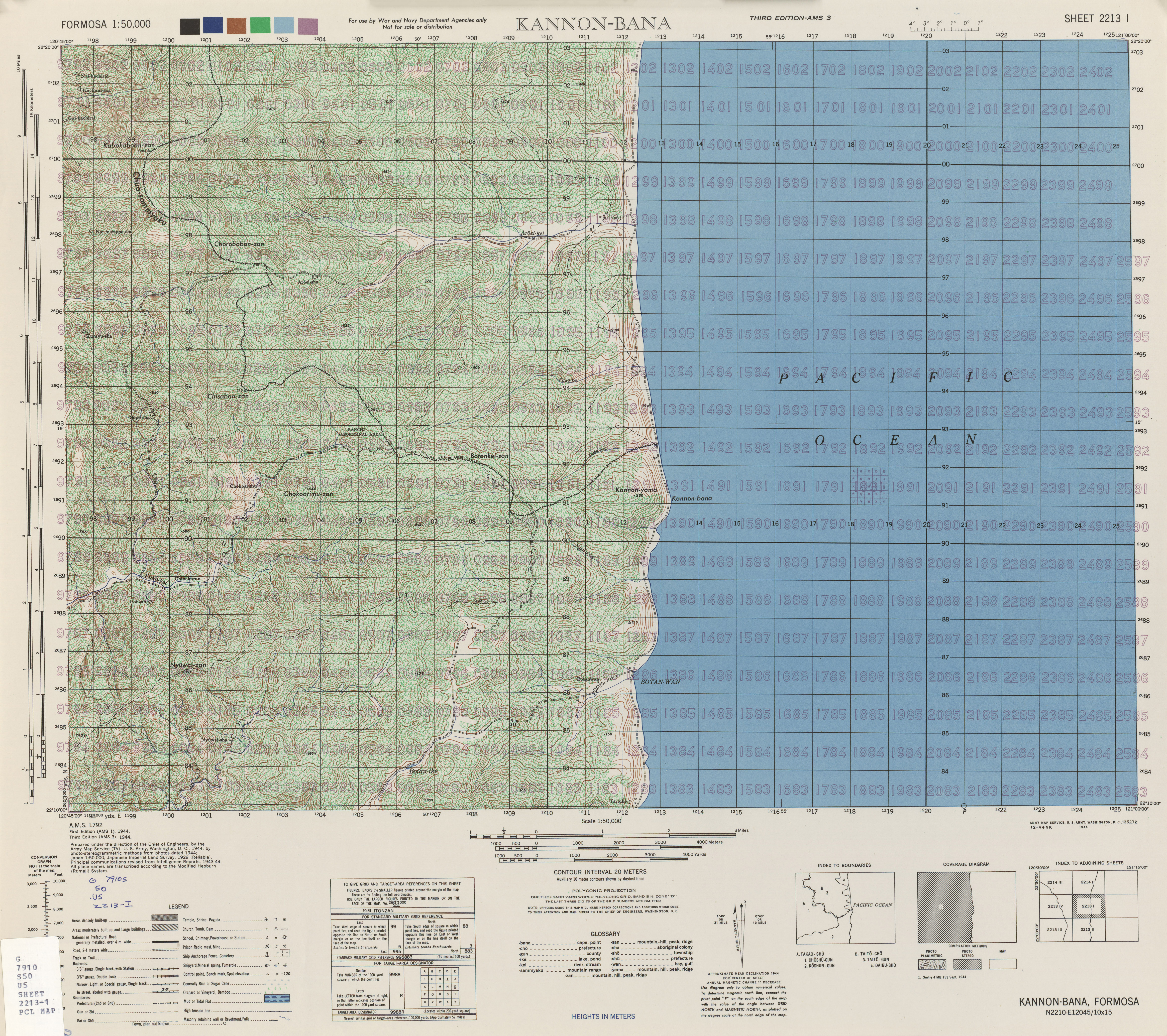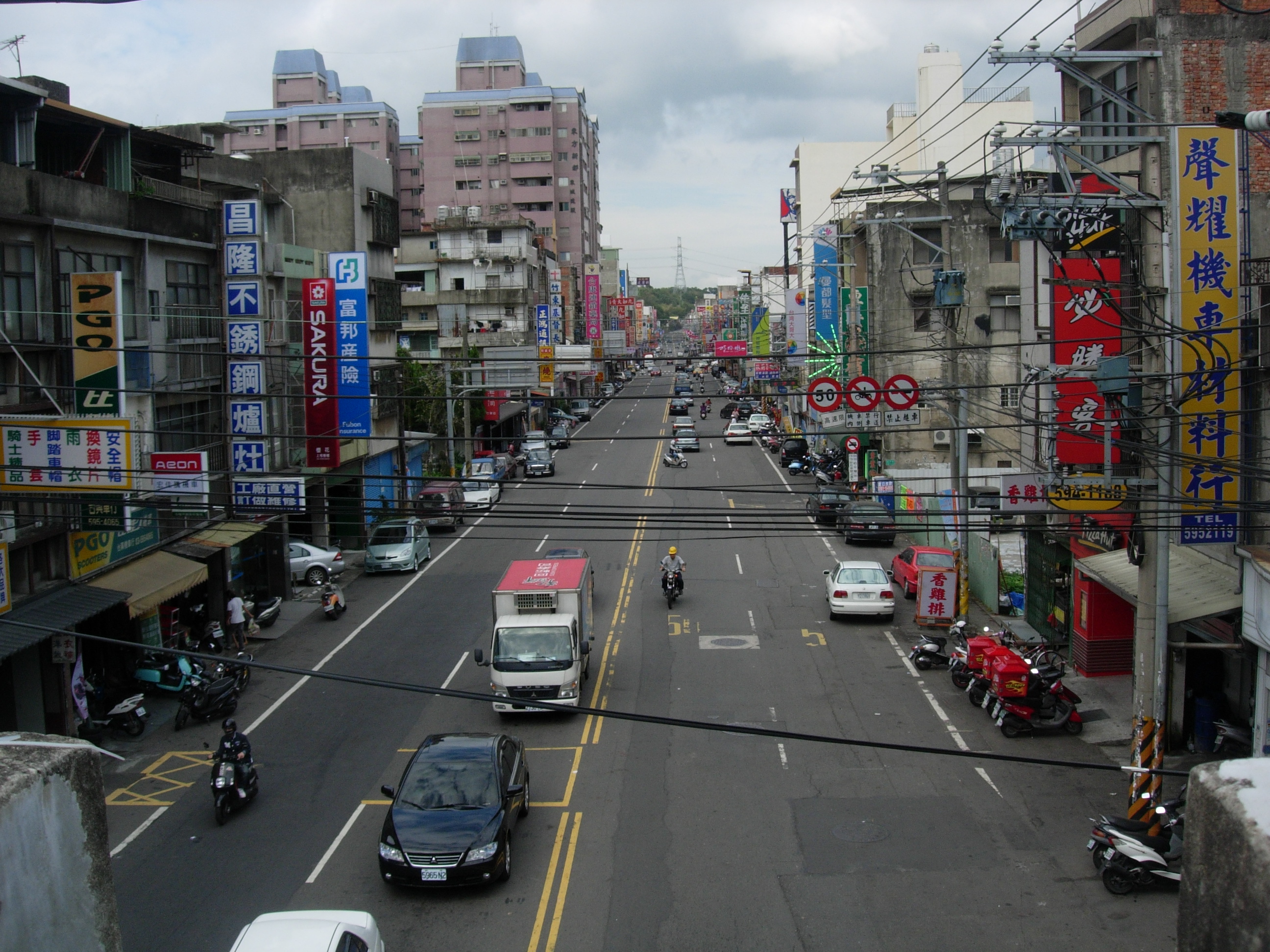|
Mudan, Pingtung
Mudan Township () is a mountain indigenous township in Pingtung County, Taiwan. The main population is the Paiwan people of the Taiwanese aborigines. History Formerly called ''Botansia'' (). Geography * Area: * Population: 4,864 people (2014) Administrative divisions The township comprises six villages: Gaoshi, Mudan, Shimen, Silin, Tungyuan and Xuhai. Infrastructures * Mudan Dam Tourist attractions * Dongyuan Wetland * Gaoshi Shrine Gaoshi Shrine ( zh, t=高士神社, p=Gāoshì Shénshè), formerly known as , is a Shinto shrine located in Gaoshi, a Paiwan village in Mudan, Pingtung, Taiwan. With the original shrine destroyed by typhoon in 1946, a new shrine was rebuilt ... * Shihmen Historical Battle Field See also * Mudan Incident (1871) References External links Mudan Township Office Townships in Pingtung County Taiwan placenames originating from Formosan languages {{Taiwan-geo-stub ... [...More Info...] [...Related Items...] OR: [Wikipedia] [Google] [Baidu] |
Township (Taiwan)
Townships are the third-level administrative subdivisions of counties of the Republic of China (Taiwan), along with county-administered cities. After World War II, the townships were established from the following conversions on the Japanese administrative divisions: Although local laws do not enforce strict standards for classifying them, generally urban townships have a larger population and more business and industry than rural townships, but not to the extent of county-administered cities. Under townships, there is still the village as the fourth or basic level of administration. As of 2022, there are totally 184 townships, including 38 urban townships, 122 rural townships and 24 mountain indigenous townships. 174 townships with 35 urban and 118 rural townships are located in Taiwan Province and 10 townships with 3 urban and 4 rural townships are located in Fujian Province. Penghu and Lienchiang are the only two counties that do not have urban townships. Statistics of ... [...More Info...] [...Related Items...] OR: [Wikipedia] [Google] [Baidu] |
Pingtung County
Pingtung County is a county located in southern Taiwan. It has a warm tropical monsoon climate and is known for its agriculture and tourism. Kenting National Park, Taiwan's oldest national park, is located in the county. The county seat is Pingtung City. Name The name ''Pingtung'' means "east of Banping mountain", referring to a nearby mountain known as Banping mountain (). History Early history Aboriginal inhabitants of Liuqiu Island (13 km misouthwest of Taiwan, and now part of Pingtung County) killed Dutch sailors on two occasions. In response, in the spring of 1636, Dutch sailors carried out a punitive campaign that became known as the Lamey Island Massacre. Modern-day Pingtung County and Kaohsiung City were part of Banlian-chiu (萬年州; ''Bān-liân-chiu'') during the Kingdom of Tungning (1661–1683) and Fongshan Prefecture (鳳山縣; ''Hōng-soaⁿ-koān'') during Qing dynasty rule (1683–1895). Until the seventeenth century, this area of Taiwan was ... [...More Info...] [...Related Items...] OR: [Wikipedia] [Google] [Baidu] |
Taiwan
Taiwan, officially the Republic of China (ROC), is a country in East Asia, at the junction of the East and South China Seas in the northwestern Pacific Ocean, with the People's Republic of China (PRC) to the northwest, Japan to the northeast, and the Philippines to the south. The territories controlled by the ROC consist of 168 islands, with a combined area of . The main island of Taiwan, also known as ''Formosa'', has an area of , with mountain ranges dominating the eastern two-thirds and plains in the western third, where its highly urbanised population is concentrated. The capital, Taipei, forms along with New Taipei City and Keelung the largest metropolitan area of Taiwan. Other major cities include Taoyuan, Taichung, Tainan, and Kaohsiung. With around 23.9 million inhabitants, Taiwan is among the most densely populated countries in the world. Taiwan has been settled for at least 25,000 years. Ancestors of Taiwanese indigenous peoples settled the isla ... [...More Info...] [...Related Items...] OR: [Wikipedia] [Google] [Baidu] |
Paiwan People
The Paiwan () are an indigenous people of Taiwan. They speak the Paiwan language. In 2014, the Paiwan numbered 96,334. This was approximately 17.8% of Taiwan's total indigenous population, making them the second-largest indigenous group. The majority of Paiwan people live in the southern chain of the Central Mountain Range, from Damumu Mountain and the upper Wuluo River in the north of the southern chain to the Hengchun Peninsula in the south of it, and also in the hills and coastal plains of southeastern Taiwan. There are two subgroups under the Paiwan people: the Raval and the Butsul. The unique ceremonies in Paiwan are Masaru and Maleveq. The Masaru is a ceremony that celebrates the harvest of rice, whereas the Maleveq commemorates their ancestors or gods. History The name "Paiwan" may have originated from a myth. According to the myth, Paiwan ancestors lived in a location on Dawu mountain (Tawushan) that was called "Paiwan", where heaven is said to exist. Paiwan people ... [...More Info...] [...Related Items...] OR: [Wikipedia] [Google] [Baidu] |
Taiwanese Aborigines
Taiwanese may refer to: * Taiwanese language, another name for Taiwanese Hokkien * Something from or related to Taiwan ( Formosa) * Taiwanese aborigines, the indigenous people of Taiwan * Han Taiwanese, the Han people of Taiwan * Taiwanese people, residents of Taiwan or people of Taiwanese descent * Taiwanese language (other) * Taiwanese culture * Taiwanese cuisine * Taiwanese identity Taiwanese people may be generally considered the people of Taiwan who share a common culture, ancestry and speak Taiwanese Mandarin, Hokkien, Hakka or indigenous Taiwanese languages as a mother tongue. Taiwanese people may also refer to the i ... See also * {{disambiguation Language and nationality disambiguation pages ... [...More Info...] [...Related Items...] OR: [Wikipedia] [Google] [Baidu] |
Mudan Dam
The Mudan Dam () is a dam in Mudan Township, Pingtung County, Taiwan. It forms the largest reservoir in Pingtung County. History The construction of the dam began in 1989 and was completed in 1995. In early November 2020, the dam released its water in preparation for the upcoming Typhoon Atsani. Technical details The reservoir collects water from Rureng Creek and Mudan Creek. The surface area of its catchment is 60 km2 with a total effective storage capacity of 27,930,000 m3. It supplies water for domestic and agriculture water demands in Checheng, Fangliao, Fangshan, Hengchun, Manzhou and Mudan Townships, as well as public water around Kenting National Park. See also * List of dams and reservoirs in Taiwan This is a partial listing of dams and reservoirs in Taiwan (Republic of China). List of dams and reservoirs See also * List of power stations in Taiwan References * Reservoirs, dams and weirs of Taiwan(Taiwan Water Resources Agency ... References ... [...More Info...] [...Related Items...] OR: [Wikipedia] [Google] [Baidu] |
Dongyuan Wetland
The Dongyuan Wetland () is a wetland in Mudan Township, Pingtung County, Taiwan. History The wetland area used to be a rice farmland. After the construction of Mudan Dam in 1995, the area was submerged by the reservoir the dam created and the land evolved into wetland. Geology The wetland spans over an area of 1.12 km2 and is a conservation area. See also * Geography of Taiwan Taiwan, officially the Republic of China (ROC), is an island country located in East Asia. The main island of Taiwan, formerly known in the Western political circles, press and literature as Formosa, makes up 99% of the land area of the territori ... References Landforms of Pingtung County Wetlands of Taiwan {{Taiwan-geo-stub ... [...More Info...] [...Related Items...] OR: [Wikipedia] [Google] [Baidu] |
Gaoshi Shrine
Gaoshi Shrine ( zh, t=高士神社, p=Gāoshì Shénshè), formerly known as , is a Shinto shrine located in Gaoshi, a Paiwan village in Mudan, Pingtung, Taiwan. With the original shrine destroyed by typhoon in 1946, a new shrine was rebuilt in 2015, making it the first Shinto shrine constructed in Taiwan in the post–World War II era, following the end of the island's Japanese rule. The current shrine is not affiliated with the Shinto religion (or any other deity) but serves as a memorial for the Taiwanese population lost in wars such as World War II. History The shrine was originally built in 1939 during the Japanese rule of Taiwan, but was destroyed in 1946 due to typhoon damage. The village's residents wished to rebuild the shrine but could not, as reconstruction was prohibited under martial law at the time. The only surviving portion of the shrine was its concrete base. In 2015, a ''kannushi'' named learned of the shrine's existence through the Friends of Lee Teng ... [...More Info...] [...Related Items...] OR: [Wikipedia] [Google] [Baidu] |
Shihmen Historical Battle Field
Shimen District (), also known as Sekimon, is a sparsely populated rural district in the northern part of New Taipei City in northern Taiwan. It is part of the North Coast and Guanyinshan National Scenic Area and includes Taiwan's northernmost point, Cape Fugui. History While known to earlier explorers, including the Dutch, the area was first explicitly mentioned in Chinese annals in 1694 as ''Shimenshan'' (). During the period of Imperial Japanese rule, Shimen was called ''Sekimon'' Village , and was governed under Tansui District of Taihoku Prefecture. In 1945 when the Kuomintang took over administration of Taiwan the area became Shimen Rural Township, a part of Taipei County. With the reorganization of Taipei County in 2010, Shimen became a district of the newly created New Taipei City. Geography The interior of Shimen is predominantly mountainous, with small areas of flat land on the coast. The district is bordered to the north by the East China Sea, to the southwest by ... [...More Info...] [...Related Items...] OR: [Wikipedia] [Google] [Baidu] |
Mudan Incident (1871)
The Mudan incident of 1871 (、Japanese: 宮古島島民遭難事件、Japanese: 琉球漂流民殺害事件) was the massacre of 54 Ryukyuan sailors in Qing-era Taiwan who wandered into the central part of Taiwan after their ship shipwrecked off of Taiwan's southeastern coast. Twelve survivors were rescued by local Han people and were later returned to Miyako Island in the Ryukyus. However, because the Ryukyu Kingdom was a tributary state of Qing China as well as within the Japanese sphere of influence, the massacre was used as a pretext for Japan to invade southern Taiwan in 1874 to avenge "Japanese nationals" as well as to annex the Ryukyu Kingdom in 1879. Incident Shipwreck On November 30, 1871, four Ryukyuan tributary ships left the capital of Shuri, on Okinawa island, homebound for Miyako Island and the Yaeyama islands (both in the southern part of the Ryukyu Kingdom). However, before reaching home the four ships were blown off course and hit by a typhoon on December ... [...More Info...] [...Related Items...] OR: [Wikipedia] [Google] [Baidu] |
Townships In Pingtung County
A township is a kind of human settlement or administrative subdivision, with its meaning varying in different countries. Although the term is occasionally associated with an urban area, that tends to be an exception to the rule. In Australia, Canada, Scotland and parts of the United States, the term refers to settlements too small or scattered to be considered urban. Australia ''The Australian National Dictionary'' defines ''township'' as: "A site reserved for and laid out as a town; such a site at an early stage of its occupation and development; a small town". The term refers purely to the settlement; it does not refer to a unit of government. Townships are governed as part of a larger council (such as that of a shire, district or city) or authority. Canada In Canada, two kinds of township occur in common use. *In Eastern Canada, a township is one form of the subdivision of a county. In Canadian French, this is a . Townships are referred to as "lots" in Prince Edward I ... [...More Info...] [...Related Items...] OR: [Wikipedia] [Google] [Baidu] |





.jpg)